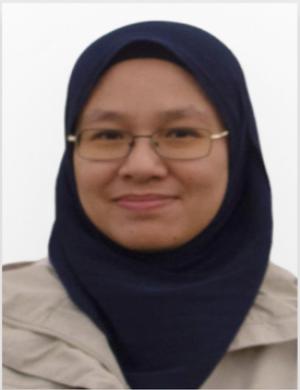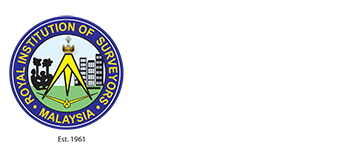Tel: 603 – 79551773 / 79569728 | Fax : 603-79550253
secretariat@rism.org.myPublication Language
Articles must be written in English.
Aim & Scope
The International Surveying Research Journal (ISrJ) is a peer-reviewed, open-access journal dedicated to publishing research relevant to the global surveying community. It is published bi-annually (June and December) by the Royal Institution of Surveyors Malaysia (RISM).
This journal aims to provide insights into surveying practices. Even when research focuses on a specific country, case, or project, it must highlight its relevance and benefits to an international audience. The journal also fosters knowledge sharing among researchers, policymakers, and practitioners.
ISrJ is dedicated to publishing a diverse array of scholarly work, including original research, review articles, practical and technical papers, as well as case studies that focus on Quantity Surveying, Building Surveying, Property Surveying, and Geomatics and Land Surveying. Moreover, the journal addresses topics pertinent to the built environment that highlight advancements in surveying. It encompasses various spatial scales, from cities and communities to buildings and building systems, while engaging in relevant policy discussions grounded in sound methodologies. In addition, ISrJ showcases invited perspectives and critical policy papers, enriching the discourse in these fields.
Submissions must not be under consideration elsewhere, nor should they have been previously published in any form. Authors are expected to comply with the journal's authorship criteria, ensuring that all listed authors have made significant contributions to the research and manuscript preparation. Redundant or duplicate publications will not be accepted, and authors must ensure that the content submitted is unique and aligned with the journal’s scope and objectives.
ISSN
eISSN: 2232-1306
Peer Review
ISrJ follows a strict double-blind peer-review process, where both authors and reviewers remain anonymous to each other. ISrJ peer review process is designed to ensure the quality and integrity of the research published in academic journals.
Review Process Timeline
The ISrJ reviewing process begins with an editorial screening within 15 working days of submission. If the manuscript passes this stage, it proceeds to peer review. The journal allows up to two rounds of revision, with a 40-day revision period after each decision letter. Accepted manuscripts are published in either June or December, depending on which date follows the acceptance.
Abstracting and indexing
Malaysian Citation Index (MyCite)
| Position | Name Affiliation | Country |
| Editor-in-Chief |  Sr Dr. Nurshuhada Zainon Sr Dr. Nurshuhada ZainonDepartment of Quantity Surveying, Universiti Malaya https://umexpert.um.edu.my/zshuhada |
Malaysia |
| Editor-in-Chief |  Dr. Myzatul Aishah Binti Haji Kamarazaly Dr. Myzatul Aishah Binti Haji KamarazalySchool of Architecture, Building & Design, Faculty of Innovation & Technology, Taylor’s University https://expert.taylors.edu.my/cv/myzatulaishah.kamarazaly |
Malaysia |
| Editior |  Dr. Timothy Kurannen Baaki Dr. Timothy Kurannen BaakiLiverpool John Moores University UK https://www.ljmu.ac.uk/about-us/staff-profiles/faculty-of-engineering-and-technology/school-of-civil-engineering-and-built-environment/kurannen-baaki |
United Kingdom |
| Editor |  Associate Professor Dr. Jasper Mbachu Associate Professor Dr. Jasper MbachuBond University Australia https://bond.edu.au/profile/jasper-mbachu |
Australia |
| Editor |  Professor Dr. Wang Chen Professor Dr. Wang ChenHuaqiao University, Xiamen China https://faculty.hqu.edu.cn/WC12/en/index.htm |
China |
| Editor |  Dr. Suwaree Tantanawat Dr. Suwaree TantanawatAssumption University Thailand https://www.msme.au.edu/index.php/staff-member/tantanawat-suwaree/ |
Thailand |
| Editor |  Associate Professor Dr. Dwifitra Jumas Associate Professor Dr. Dwifitra JumasUniversitas Bung Hatta, Indonesia https://sinta.kemdikbud.go.id/authors/profile/6199672 |
Indonesia |
Notes for Contributors
International Surveying Research Journal (ISrJ)
Submission Guidelines
Electronic Submission
Full paper submission should consist of a file in Microsoft Word format attached to an e-mail message.
Format of Full Papers
Language
English and Bahasa Malaysia
Article written in Bahasa Malaysia must include an abstract in English.
Content
Full paper should include title of paper, author details, Abstract, Keywords, and References.
Paper Length
Full paper should not be more than 20 pages, including all text, graphs, tables, diagrams, maps, pictures, illustrations, and appendices.
Paper size
Set paper size to A4. The lines of text (except the text under Abstract) should be intended left and right 3cm from the paper margin.
Text font
Times New Roman
Abbreviations
No full stop is needed for titles, names, acronyms, and measurement units: eg, Mr, Dr, PRC, UK, ISM, Jan, Feb, Mar, 4m, 5ft.
Abstract
Abstract in bold, full caps, 12 point size, and centered. On the next line, type the content of the Abstract in 10-point size, indent 3cm on margins, left and right justified.
Abstract should be in single paragraph outlining the aims, scope, and conclusion of the paper. It should be no more than 300 words in length.
Keywords
Drop 2 line spaces and type KEYWORDS in bold, full caps, 12-point size, and left justified. Type the keywords in the next line and indent 3cm on both margins, left and right justified. Suggest approximately 5-10 keywords spaced by commas.
Main Text
Drop 2 line spaces before typing each of the above topics. The text should be single spaced, single column, indented 3cm on margins, left and right justified, and 12-point size. Paragraphs should not have any indentations. Any abbreviations used should be defined.
Section headings are in bold and full caps. There should be no blank lines between the heading and the first line of text. Separate paragraphs in each Section with one blank line. There should be two blank lines before each Section.
Equations should be centered, with a spaced line above and below. Equation font size should be the same as that of the text. Use only those mathematical symbols supported by Microsoft word.
All graphs, tables, diagrams, maps, and other illustrations should be in black and white. They should be labeled and embedded in text as close as possible to where they are first cited.
References and table headings should appear above the table. Tables are to be centered on the page. Leave one blank line before the table heading and one blank line after the table.
Illustrations are to be centered, with the reference and caption printed below the figure. Footnotes should appear at the bottom of the page where they are cited, numbered and in 10 point size.
References
Drop 2 line spaces and type REFERENCES in bold. All references should be in 12-point size, left and right justified, intended 3cm on both margins for the first line and 3cm on the left margin for subsequent lines. List all bibliographical order by the last name of the first author at the end of the paper in the following format:
Journals
Last name and initials author(s), (year of publication), paper title, journal volume: issue, page numbers, for examples:
Stewart R (2001), the Spatial Data Infrastructure: Concept, Prototype Development and Future Direction, GIS –Today and Tomorrow, 28:2, 155-177.
Books
Last name and initials of author(s), (year of publication), book title (italics), edition (if any), publisher, for example:
Blachut CD (1979), Urban Surveying and Mapping, Springer-Verlag, New York.
Chapters in books
Last name and initials of author(s), (year of publication), paper/chapter title, book title (italics), -last name and initials of book editor(s)(eds.), name of publisher, for example:
Wofford LE (1999), Ethical Choice in Real Estate: Selected Perspectives from Economics, Psychology, and Sociology, Ethics in Real Estate, Roulac, S. (ed.), Kluwer Academic Publishers, Massachusetts, 39-70.
The reference should be cited in the article by typing the last names of the authors (without any title) and year (in brackets), e.g. Steward (2001) and Fellows and Liu (1999), or Lai et al (2005) in case of more than 3 authors. References to the same author(s) in the same year should be differentiated by using 2005a, and 2005b etc.
Copyright Transfer
Submission of an article for publication implies the transfer of the copyright from the authors to The Institution of Surveyors, Malaysia upon acceptance, and all authors are required to sign a Transfer of Copyright form. The final decision of acceptance rests with the Editorial board. Authors are responsible for all statements made in their articles.
Financial Disclosure and Disclaimers
Any affiliation with or involvement in any organization or entity with a direct financial interest in the subject matter or materials discussed in the manuscript should be disclosed in an attachment. Any financial or material support should be identified in the manuscript.
For Enquiries
Please email to the Editor of the International Surveying Research Journal (ISrJ) at editor@rism.org.my or fax (603) 7955 0253 or by post to The Institution of Surveyors, Malaysia, 3rd Floor, Bangunan Juruukur, 64-66, Jalan 52/4, 46200 Petaling Jaya, Selangor. Full papers are to be sent by e-mail to the editor at: editor@rism.org.my.
ISrJ Publication Ethics
To maintain the integrity and quality of ISrJ, the following principles of Publication Ethics are strictly adhered to:
Editor’s Responsibilities:
ISrJ uses a double-blind peer review process to avoid conflicts of interest among authors, editors, and reviewers. The journal employs plagiarism detection software, like Turnitin, to check submitted papers and may reject those with high similarity scores. All information related to submitted papers is kept confidential.
Editors evaluate manuscripts based solely on their academic quality and cannot use unpublished information from authors' work without permission. They must ensure that reviews are unbiased and free from discrimination based on gender, race, religion, or citizenship. Editors are responsible for maintaining a fair peer review process while keeping the identities of authors and reviewers confidential. Additionally, editors are prohibited from using AI tools to review manuscripts.
Editorial Board’s Responsibilities:
The Editorial Board decides which articles to publish and keeps all manuscript details confidential. They are responsible for everything published but do not endorse the views expressed in the articles. The Board handles ethical concerns by conducting fair investigations and taking appropriate action when needed.
Reviewer’s Responsibilities:
Reviewers must treat all manuscripts as confidential, sharing or discussing them only with the editor's authorization, and must avoid any conflicts of interest related to the research, authors, or funding. Reviews should be objective, free from personal criticism of the author, and supported by clear, reasoned arguments. If a reviewer is unable to complete the review within the stipulated time, they must inform the editor promptly so the manuscript can be reassigned. Additionally, the use of AI tools for manuscript evaluation is strictly prohibited.
Author’s Responsibilities:
Authors must ensure their work is entirely original, properly credit all sources through citation and referencing, and avoid plagiarism in any form, as it is unethical and will lead to immediate rejection. Submissions must be original, not submitted elsewhere, and free from duplicate submissions to multiple journals. Authorship is limited to those who made significant contributions to the research, and changes to authorship are not permitted after the initial submission. The corresponding author must confirm that all co-authors are appropriate, have reviewed and approved the final manuscript, and consent to its submission. If an error or inaccuracy is identified in a manuscript or published work, authors must promptly notify the editor, retract or correct the paper, or provide evidence supporting the original content. All potential conflicts of interest must be disclosed at submission, and authors must agree to transfer copyright upon submission. Finally, any use of AI must be explicitly declared.
